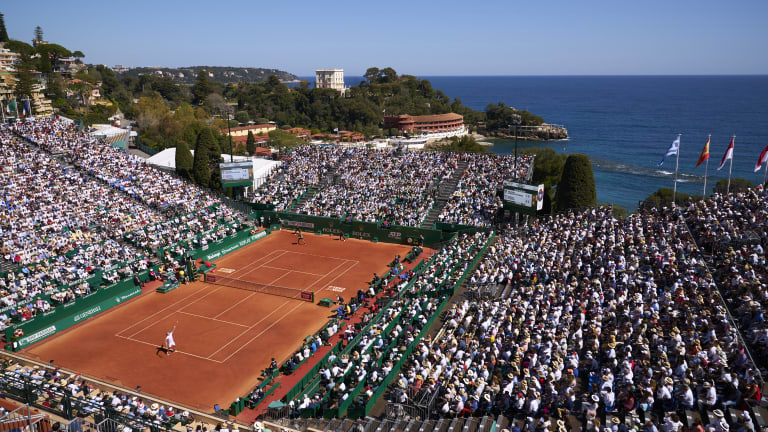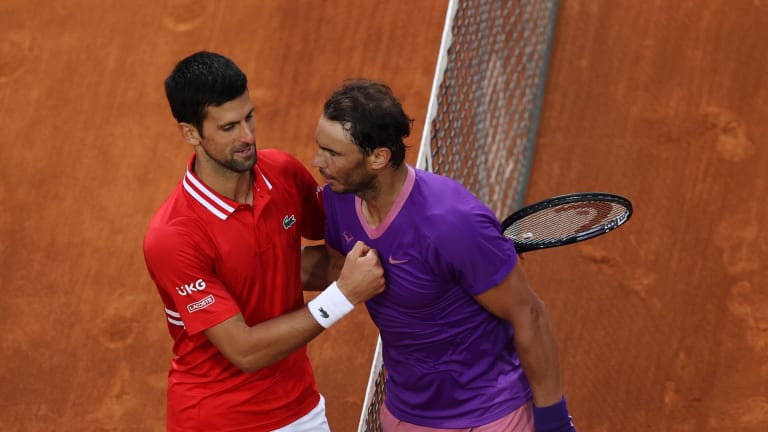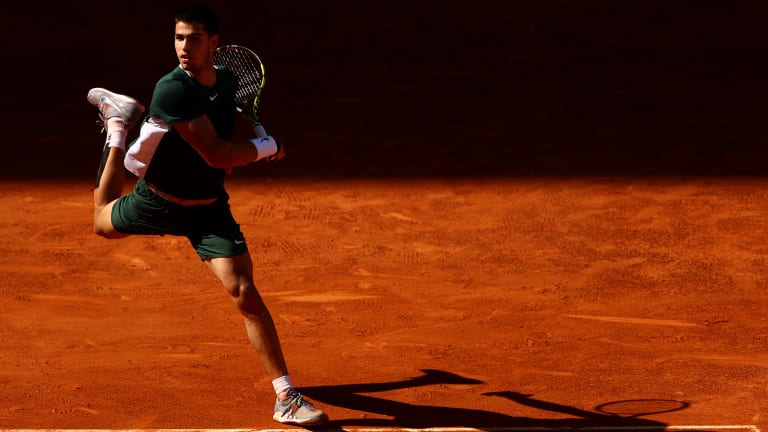ATP Monte Carlo, Monaco
Brick by brick: Can Rafael Nadal fend off new guard as clay swing looms?
By Apr 06, 2023ATP Monte Carlo, Monaco
Monte Carlo takeaways: Alcaraz wins by playing for himself, one-handed backhands hold firm
By Apr 14, 2025ATP Monte Carlo, Monaco
Carlos Alcaraz overcomes worn-out Lorenzo Musetti for first title in Monte Carlo
By Apr 13, 2025ATP Monte Carlo, Monaco
Carlos Alcaraz vs. Lorenzo Musetti: Where to watch, and who will win, their Monte Carlo final
By Apr 12, 2025ATP Monte Carlo, Monaco
Carlos Alcaraz charges past Alejandro Davidovich Fokina to reach Monte Carlo final
By Apr 12, 2025ATP Monte Carlo, Monaco
Alex de Minaur: 6-0, 6-0 win over Grigor Dimitrov in Monte Carlo was 'bizarre'
By Apr 11, 2025ATP Monte Carlo, Monaco
Carlos Alcaraz vs. Alejandro Davidovich Fokina: Where to Watch, Monte Carlo Preview, Betting Odds
By Apr 11, 2025ATP Monte Carlo, Monaco
Alex de Minaur vs. Lorenzo Musetti: Where to Watch, Monte Carlo Preview, Betting Odds
By Apr 11, 2025ATP Monte Carlo, Monaco
Carlos Alcaraz waits for his chances to clinch first clash with Arthur Fils in Monte Carlo
By Apr 11, 2025ATP Monte Carlo, Monaco
Stefanos Tsitsipas vs. Lorenzo Musetti: Where to Watch, Monte Carlo Preview, Betting Odds
By Apr 10, 2025ATP Monte Carlo, Monaco
Brick by brick: Can Rafael Nadal fend off new guard as clay swing looms?
The Big 3, and especially Nadal, raised the stakes of the clay season over the last two decades. Can we get one more epic run-up to Roland Garros in 2023?
Published Apr 06, 2023
Advertising
Advertising

The famous bird’s-eye view of the Monte Carlo Country Club’s red clay, framed by the blue sweep of the Mediterranean behind it, which starts popping up on our social media feeds every April.
© Getty Images
Advertising

Djokovic and Nadal have been the clay-court season's preeminent rivalry for over a decade.
© Getty Images
Advertising

Can Alcaraz rediscover the clay-court swagger that took him to wins over both Djokovic and Nadal at the Madrid Masters?
© Getty Images